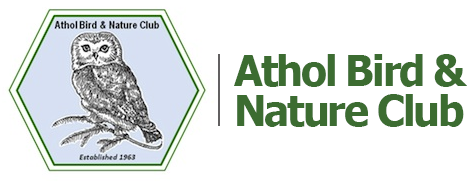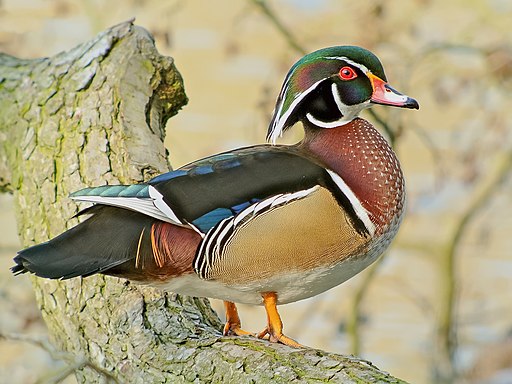Wood Duck
Aix spansa
Written by Kathy Richards
The wood duck was rare in 1910 and thought to be near extinction. This was due to hunting (for feathers for ladies hats and for meat) and habitat loss. By 1930 it’s numbers were increasing possibly due to the return of the beaver and the shallow beaver ponds as well as maturing trees with cavities that could be used for nesting and nest boxes which were being put up.
The drake (male) is considered one of the most colorful birds in North America (the female is a drab speckled brown)
HABITAT:
They prefer shallow quiet water including lakes, streams, beaver ponds, swamps and scrub/shrub wetlands. They like to have a cover of large trees over the wetland. If there is a lack of wetland the wood duck will head to upland groves and fields to find grain, seeds and nuts to eat. Their range includes most of the US and southern Canada including southern Alaska. Its range also extends into Mexico.
BEHAVIOR:
They belong to a group called dabbling ducks due to the way they feed – bottoms up.
The day after the eggs hatch the babies climb out to the edge of the nest cavity and jump. The ducklings are light and fluffy so are like parachutes. They land with a bounce then follow the female to the water. Once in the water the ducklings will swim behind the female in a tight group.
If there is danger the wood duck will dive and swim underwater coming out among the cover of plants.
They are adept at flying through woodlands and maneuvering around trees.In MA they are migratory wintering along the southern Atlantic Coast.
NESTING:
The wood duck builds in tree cavities that are 15-50 feet high. They prefer to nest along streams but will sometimes nest up to a mile from water. The hen lays 10-15 eggs and covers them with down which she plucks from her breast. She will often have 2 broods a year in the south but only one here in MA.
FOOD:
Seeds, plants including the stems and buds, fruits, nuts (acorn and hickory nut), waste grain (from agricultural fields), aquatic and terrestrial insects
PREDATOR:
People, red fox, raccoon, skunks, coyotes, badgers, mink, crows, ravens, gulls

